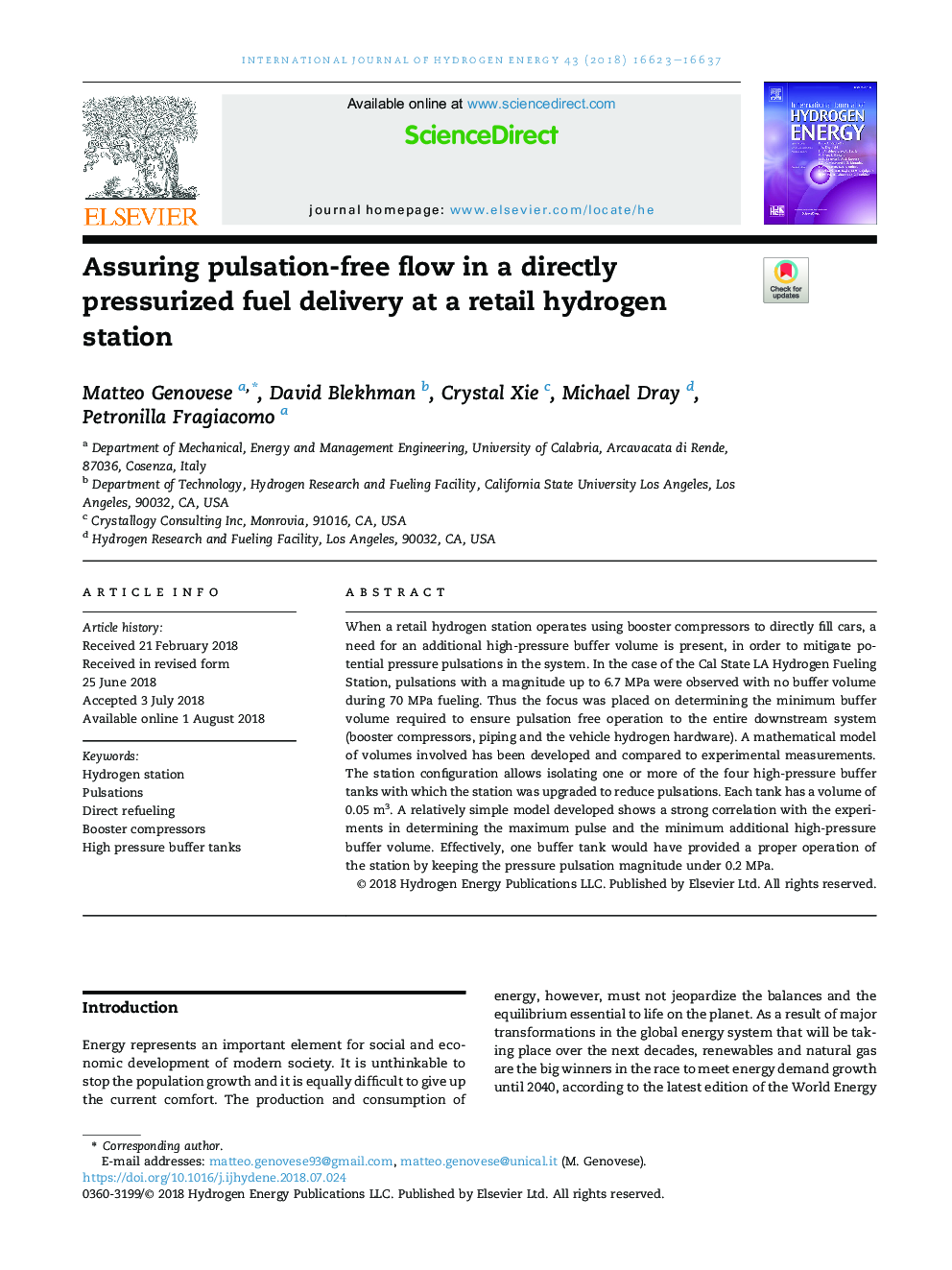| Article ID | Journal | Published Year | Pages | File Type |
|---|---|---|---|---|
| 8942827 | International Journal of Hydrogen Energy | 2018 | 15 Pages |
Abstract
When a retail hydrogen station operates using booster compressors to directly fill cars, a need for an additional high-pressure buffer volume is present, in order to mitigate potential pressure pulsations in the system. In the case of the Cal State LA Hydrogen Fueling Station, pulsations with a magnitude up to 6.7Â MPa were observed with no buffer volume during 70Â MPa fueling. Thus the focus was placed on determining the minimum buffer volume required to ensure pulsation free operation to the entire downstream system (booster compressors, piping and the vehicle hydrogen hardware). A mathematical model of volumes involved has been developed and compared to experimental measurements. The station configuration allows isolating one or more of the four high-pressure buffer tanks with which the station was upgraded to reduce pulsations. Each tank has a volume of 0.05Â m3. A relatively simple model developed shows a strong correlation with the experiments in determining the maximum pulse and the minimum additional high-pressure buffer volume. Effectively, one buffer tank would have provided a proper operation of the station by keeping the pressure pulsation magnitude under 0.2Â MPa.
Keywords
Related Topics
Physical Sciences and Engineering
Chemistry
Electrochemistry
Authors
Matteo Genovese, David Blekhman, Crystal Xie, Michael Dray, Petronilla Fragiacomo,
